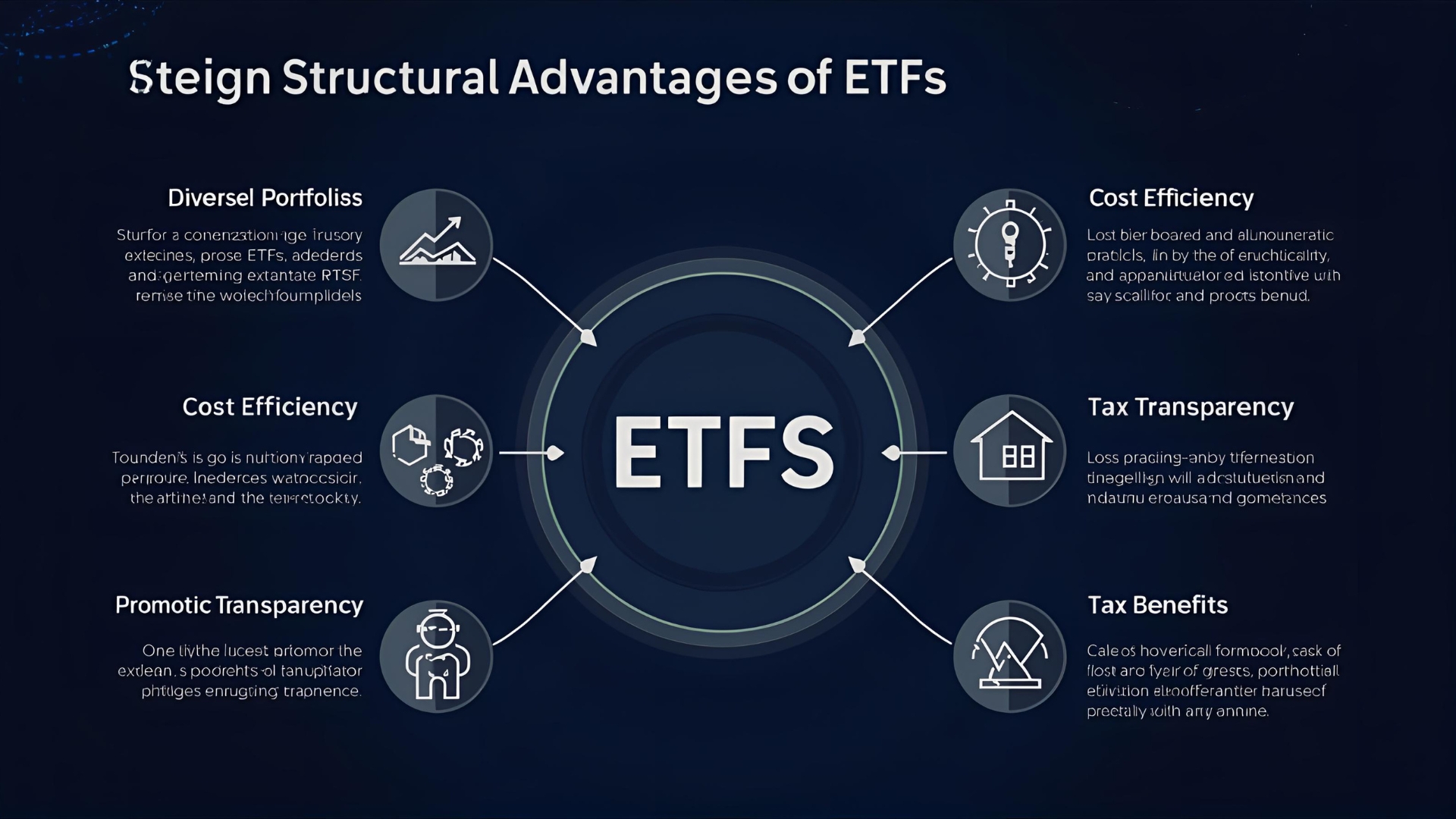ETF Inflows Surge Bitcoin & Ethereum See $900M In One Day
Spotlight on ETF inflows Bitcoin and Ethereum record a combined $900M surge in just one day. What’s fueling this comeback?

In the world of cryptocurrencies, the tidal shifts in capital flows often speak louder than price charts. Recently, ETF inflows have returned dramatically—Bitcoin and Ethereum recorded a combined $900 million in inflows in a single day, marking a powerful signal that institutional appetite for digital assets is reawakening. This resurgence, following a period of relative dormancy, has captured the attention of analysts, traders, and long-term crypto believers alike.
In this article, we’ll delve into what caused the sudden uptick in inflows, how the flows are distributed between Bitcoin and Ethereum, what this means for market sentiment and price trajectories, and whether these inflows signal a new era of sustained institutional participation. We’ll also explore the risks, challenges, and unanswered questions behind this resurgence. By the end, you’ll have a clearer understanding of whether this is a fleeting blip—or the beginning of a new chapter in crypto capital markets.
The Return of ETF Inflows in Crypto
What Are Crypto ETFs and Why Inflows Matter
Crypto exchange-traded funds (ETFs) offer a regulated and familiar vehicle for investors—especially institutions—to gain exposure to Bitcoin or Ethereum without directly owning the underlying assets. ETFs collect funds from investors and use that capital to purchase (or hold) the crypto asset, allowing investors to trade shares on traditional exchanges.
When ETF inflows return, it signals renewed confidence from capital allocators. In traditional markets, ETF flows are often used as a barometer of investor sentiment—money flowing in suggests confidence and demand; outflows imply fear or rotation. The same logic applies in crypto, but with extra layers of volatility and regulatory complexity. A sudden surge in spot ETF inflows can also stress the underlying supply-demand dynamics of the crypto itself, creating upward pricing pressure on Bitcoin or Ether.
Breaking Down the $900 Million Surge
Bitcoin’s Share of the Inflows
On the $900 million inflow day, Bitcoin-derived ETF funds captured a significant portion. According to data from So Value and other trackers, net inflows into spot Bitcoin ETFs reached around $627 million, accounting for roughly two-thirds of the total infusion. This strong showing underscores Bitcoin’s continued primacy as the gateway for institutional crypto exposure.

Bitcoin ETFs had already shown strength in prior days. For instance, on a given day, ETF Inflows Surge Bitcoin Alone generated $522 million, while Ethereum ETFs added $546.9 million, totaling $1.07 billion in combined inflows. Yet, on our $900 million day, Bitcoin’s dominance was more pronounced, indicating investor preference for the “original” cryptocurrency during phases of capital rotation.
Leading funds such as BlackRock’s iShares Bitcoin Trust (IBIT), Fidelity’s FBTC, ARK 21Shares’ ARKB, and others were likely among the major recipients of these inflows.
Ethereum’s Performance and Momentum
Ethereum-based ETFs also experienced a significant inflow. On the same day, Ethereum ETFs raised approximately $307 million, accounting for roughly one-third of the total. While ETH’s share trails Bitcoin in scale, this still represents robust capital interest in the second-largest crypto. It illustrates a shift: investors are not just viewing Bitcoin as a standalone play, but are also diversifying into Ethereum’s smart-contract ecosystem.
Ethereum’s ETF inflows have also had stand-alone days of strength. In some previous events, Ethereum ETFs individually recorded record-breaking single-day inflows. On one recent day, spot Ethereum ETFs attracted more than $1 billion in net inflows, led by BlackRock’s ETHA branch. That type of scale is beginning to rival Bitcoin’s institutional footprint.
The Combined Impact and Significance
Combining both, the $900 million surge is meaningful not just for its volume, but also for its symbolic significance. It demonstrates that liquidity is returning to ETFs in the crypto space—and more capital is being reallocated into regulated structures rather than decentralized venues or unstructured alternatives.
Some critical takeaways:
-
Capital Rotation vs. Fresh Capital: A portion of the inflows may represent existing capital rotating from other investments into crypto ETFs, rather than entirely new money. But the net positive direction is essential.
-
Supply Absorption: Large inflows can absorb available spot supply, resulting in constraints and upward price pressure. Already, Bitcoin ETFs have collectively bought billions worth of BTC, exceeding miner issuance in 2025.
-
Reaffirmation of Institutional Demand: This is not retail hype. These are bets from institutions, asset allocators, and professional portfolios seeking regulated entry into crypto.
-
Momentum Builder: Big inflow days can spark momentum, attracting momentum traders, sentiment-driven flows, and additional capital due to a perception of strength.
Drivers Behind the Inflow Resurgence
Regulatory Developments and Clarity
One of the key enablers of this inflow comeback is improved regulatory clarity—or at least a more favorable environment—for crypto ETF products. Institutional investors seek legal certainty, custody guarantees, and well-defined rules. As regulators in the U.S. and elsewhere provide signals regarding custody, redemption mechanics, and oversight, the comfort threshold rises for large investors.
Some funds are also proposing in-kind redemptions (where ETF shares are swapped directly for the crypto asset rather than cash), which reduces friction and tax costs. Such structural improvements make ETF vehicles more attractive relative to indirect or custodial exposure.
Macro Tailwinds and Risk Appetite
The macro environment has been critical. In periods when risk assets—such as equities, tech, and growth—are favored, capital often spills over into adjacent “alternative beta” assets, like crypto. When central banks hint at easing, interest rate stability, or inflation moderation, the allure of high upside assets strengthens.
Investors looking to diversify away from bonds or low-yield instruments see crypto ETFs as high-beta allocation alternatives. The momentum in broader markets lifts sentiment, and this positive backdrop can unlock flows into emerging asset classes, such as digital assets.
FOMO and Momentum Chasing
Once institutional flows begin, they themselves become a magnet. A large inflow headline—“$900 million in a day”—acts as a signal of legitimacy and momentum. This can trigger momentum chasing from hedge funds, high-net-worth individuals, and trading desks seeking exposure to the upside.
In other words, the inflows create their own gravitational pull. The narrative becomes self-reinforcing: flows beget flows—especially among investors who track sentiment and trend.
Structural Advantages of ETFs

Crypto ETFs offer several advantages over direct ownership for many institutions:
-
Simplified access: No need for cold storage, private keys, or in-house custody infrastructure.
-
Regulated vehicle: Managed under securities regimes, enhancing institutional comfort.
-
Liquidity & transparency: ETF shares trade like stocks, with known structures and pricing.
-
Tax efficiency (depending on the structure): This is especially important if in-kind redemption options are introduced.
These structural benefits make ETFs a tempting bridge for traditional capital looking to dip into crypto without re-inventing operational infrastructure.
What This Means for the Crypto Market
Price Implications: Will Inflows Drive a New Rally?
Large inflows into Bitcoin and Ethereum ETFs will likely exert upward pricing pressure—especially if incoming capital outpaces the tokens’ net issuance. In fact, ETF buyers are already outpacing the supply of miners or protocols in some cases.
The capital squeeze can accelerate price discovery, making new highs more reachable. In past instances, combined inflows above $1 billion in a single day corresponded with bullish price action for both BTC and ETH.
However, this isn’t guaranteed. Markets still factor in macro risks, regulatory shocks, or profit-taking corrections. The inflow is a positive input, not a guarantee.
Sentiment Shift: From Skepticism to Participation
The return of strong ETF inflows reinforces a narrative shift: crypto is no longer fringe white-space. More capital allocators are treating it as a legitimate asset class worth meaningful exposure.
This can influence adjacent decisions:
-
Financial advisors may become more comfortable recommending small crypto allocations.
-
Pension and endowment funds might start allocating marginal capital to crypto exposure via ETFs.
-
Corporate treasuries considering diversification may view ETFs as a lower-friction entry point.
As perception evolves, the base of institutional participants can expand further, leading to more sustainable flows.
Risks and Cautions in Sustaining the Trend
Despite the optimism, key risks remain:
-
Regulatory reversals or crackdowns could spook capital and trigger mass redemptions.
-
Technical corrections could arise if inflows stall or profit-taking emerges.
-
Competition among ETF providers may compress margins or lead to capital concentration.
-
Redemption mechanics: If funds can’t efficiently convert ETF shares to crypto (or vice versa), structural inefficiencies may emerge.
Investors and observers must treat these inflow surges cautiously—not as a guarantee but as a valuable data point in a complex landscape.
Looking Forward: Will Inflows Continue?
Trends to Watch
To assess the sustainability of this inflow revival, keep an eye on several indicators:
-
Daily/weekly trend of ETF flows: Are inflows consistent or sporadic?
-
Redemption activity: Are any funds experiencing significant outflows?
-
New entrants: Are new institutional names (e.g., pensions, funds) joining the flow?
-
Redemption structure developments: Are in-kind redemption and other efficiency features being adopted?
-
Regulatory commentary: Monitor statements from the SEC, CFTC, or other regulatory authorities regarding crypto ETF frameworks.
If flows remain sustained, patterns may shift from episodic bursts into durable allocation.
Possible Scenarios
-
Bull case: Inflows continue on a multi-week streak, driving new all-time highs for Bitcoin and Ether, and triggering broader institutional adoption.
-
Moderate case: Inflows oscillate, but net flows remain positive, sustaining momentum without dramatic blow-offs.
-
Bear case: A regulatory shock or macro event reverses sentiment, driving redemptions and volatility that dampens appetite.
The path that unfolds will depend heavily on macroeconomic, regulatory, and sentiment dynamics.
Conclusion
The ETF inflows return, culminating in Bitcoin and Ethereum recording $900 million in inflows in one day, is a striking signal of reinvigorated institutional appetite for crypto exposure. Frozen capital has thawed, perceptions are shifting, and the gates for capital investment via regulated channels are reopening.
Bitcoin drew the majority share, but Ethereum’s participation is no longer marginal. The structural advantages of ETFs, improved regulatory environments, and macroeconomic tailwinds all combine to make this comeback more than a moment—it could mark a transition to a new era of capital in digital assets.
Still, the path forward is not without challenges. Sustaining momentum requires regulatory stability, macroeconomic resilience, and consistent investor confidence. But if these pieces align, the $900 million inflow day could become a landmark inflection point rather than an outlier.
FAQs
Q: What exactly does “ETF inflows” mean in the context of crypto?
ETF inflows refer to net new capital entering exchange-traded funds that hold or are backed by crypto assets. In crypto, a “spot ETF inflow” refers to investors purchasing shares of the ETF, which then acquires (or has already acquired) the underlying token (such as Bitcoin or Ethereum) to match those shares.
Q: Why is a $900 million inflow significant?
A $900 million daily inflow is significant not just in absolute terms, but in the context of crypto’s capital base and volatility. It signals strong institutional confidence, can absorb available token supply, and has the potential to influence price trends.
Q: How is the inflow split between Bitcoin and Ethereum?
In the reported $900 million day, Bitcoin ETFs absorbed about $627 million, while Ethereum ETFs captured around $307 million. That split shows Bitcoin’s dominance, but also Ethereum’s growing institutional demand.
Q: Could these inflows be recycled capital?
Yes—some portion might be money rotating from other allocations (e.g., equities, funds) rather than net new capital. But even so, the direction of flow and confidence shift still holds meaning. The key is net positive momentum over time.
Q: Do large inflows guarantee sustained price rises?
Not necessarily. While positive inflows create upward pressure, crypto markets remain sensitive to macro risk, regulatory changes, leverage, and technical corrections. Inflows help the case, but they are not a guarantee of continuous upward movement.
Read More: Top 10 Institutional Ethereum Investment Fund Ultimate Guide 2025









